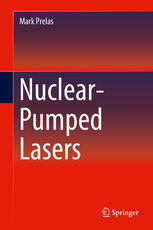

Most ebook files are in PDF format, so you can easily read them using various software such as Foxit Reader or directly on the Google Chrome browser.
Some ebook files are released by publishers in other formats such as .awz, .mobi, .epub, .fb2, etc. You may need to install specific software to read these formats on mobile/PC, such as Calibre.
Please read the tutorial at this link: https://ebookbell.com/faq
We offer FREE conversion to the popular formats you request; however, this may take some time. Therefore, right after payment, please email us, and we will try to provide the service as quickly as possible.
For some exceptional file formats or broken links (if any), please refrain from opening any disputes. Instead, email us first, and we will try to assist within a maximum of 6 hours.
EbookBell Team

4.3
98 reviewsThis book focuses on Nuclear-Pumped Laser (NPL) technology and provides the reader with a fundamental understanding of NPLs, a review of research in the field and exploration of large scale NPL system design and applications.
Early chapters look at the fundamental properties of lasers, nuclear-pumping and nuclear reactions that may be used as drivers for nuclear-pumped lasers. The book goes on to explore the efficient transport of energy from the ionizing radiation to the laser medium and then the operational characteristics of existing nuclear-pumped lasers. Models based on Mathematica, explanations and a tutorial all assist the reader’s understanding of this technology.
Later chapters consider the integration of the various systems involved in NPLs and the ways in which they can be used, including beyond the military agenda. As readers will discover, there are significant humanitarian applications for high energy/power lasers, such as deflecting asteroids, space propulsion, power transmission and mining.
This book will appeal to graduate students and scholars across diverse disciplines, including nuclear engineering, laser physics, quantum electronics, gaseous electronics, optics, photonics, space systems engineering, materials, thermodynamics, chemistry and physics.